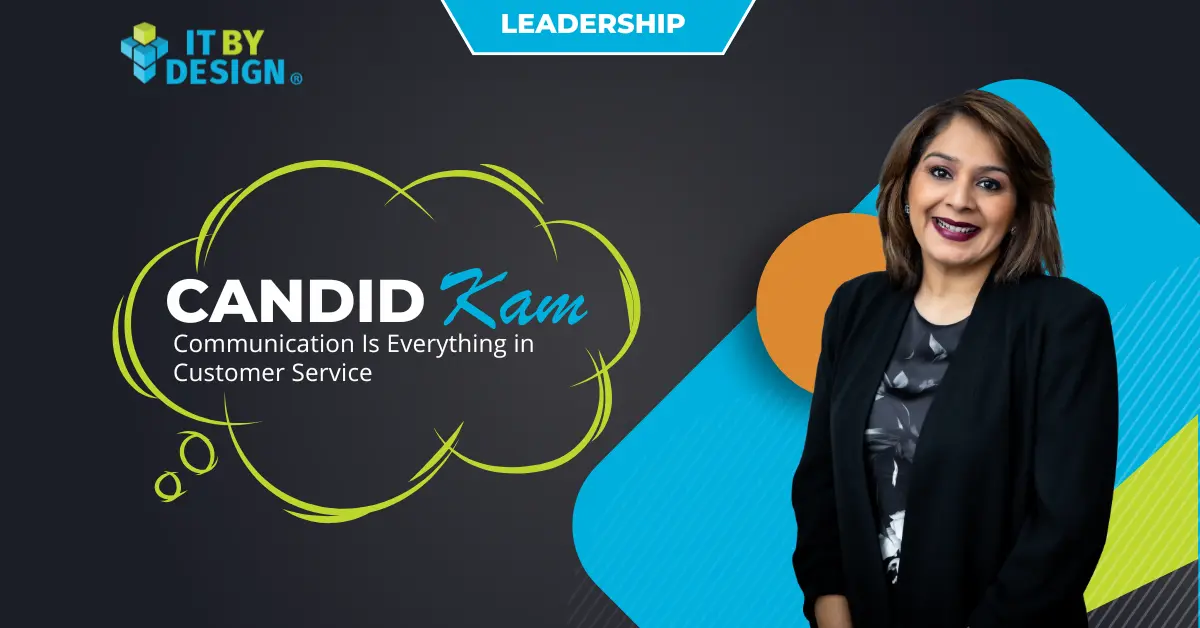The importance of building a talented, reliable, well-trained sales team can’t be overstated. Regardless of the size and revenue of your MSP practice, you need a great sales team to consistently win new customers, upsell existing ones, and build a revenue engine that fuels long-term growth.
Having said that, growing a successful sales team isn’t as simple as putting a bunch of talented people in a room and challenging them to start selling your product. You need to hire the right talent, put the right procedures into place, and provide them with the best training support.
Hire passionate, diverse sales reps
Hiring for a sales team is hard especially if you don’t come from a sales background. I speak from experience when I say that many MSP leaders and owners are comfortable with the visionary hat or with technology—but not always with sales. That said, if you understand who you’re looking for, you’ll find the right people. The first step? Define the core soft skills you’d like your new sales team to have.
I’ve found that salespeople who are naturally curious and humble are able to learn from leadership, coaches, peers, as well as from their own experience. Passion is the one value I look for in a salesperson. You can teach a skill, you can teach technique, you can teach product knowledge, but you can’t teach drive.
I think cultural, gender, and experience diversity are extremely important, too. It’s even more important for the team’s internal culture. Teams that lack diversity often form cliques and that can have a counterproductive impact on a “people-driven” business such as an MSP.
Go all out with training
It’s really a no-brainer: Better sales education = better output in the long run. Whatever onboarding process makes sense for your MSP, make it results-oriented and structured. Take into account different learning to help sales reps retain the information long term. Here, at IT By Design, we try to incorporate multiple elements into our sales team’s onboarding and ask new reps how they prefer to process information. If role-play helps them absorb a concept, we do it that as well. We also invite various leaders from across the company to participate—not only in the onboarding process but also ongoing trainings and annual strategy sessions, encouraging a wider view of our business for the sales team.
Every time we onboard, we give them time and space to absorb the material and practice in their own way. This sometimes means slowing down our onboarding program, stretching it across a longer time to make sure that at least the biggest topics and talk tracks are not taught once, but repeated or recapped several times. To reinforce the training further, we have follow-up materials ready including a video or audio recording of a talk track by a leader and a couple of live examples from the field. We also mentor our sales team, pairing them with our services leads to help them gain confidence.
Track performance but stay adaptable
Set up and measure your team’s KPIs regularly to make sure you are moving towards the desired goal. Only you know what matter more to your MSP—gross sales, gross profit, conversion rate, total commissions or customer retention. Set realistic goals accordingly and build your sales compensation plan to support incentivize those outcomes. An additional KPI-based bonus can always encourage them to improve outcomes. We’ve talked before about the importance of scorecards and SMART goals; I’d remind you to review those and the way your compensation plan rewards those behaviors on a quarterly and annual basis.
Choose a compensation model that makes sense for your business
How you structure your sales compensation plan directly influences the type of talent you can attract and retain. You may offer commission, bonuses, base salary, or some combination of all three, but refrain from putting hard caps on bonuses and commission. Create an open-ended bonus structure that allow sales reps to maximize their earning potential without putting a cap on their motivation to sell. The value that you place on certain performance measures will vary, but the larger goal of creating an organizational culture that rewards urgency and provides upside for over-performers shouldn’t be compromised.
Encourage collaboration, not competition
Your sales department is a team, not just a room full of sales people. Be sure to focus on their collaboration and encourage teamwork. To put it into action, other than daily morning sales huddles, have monthly learning opportunities throughout the year. The idea behind this is to engage everyone to collaboratively share and sharpen their skills.
Be sure to show the clear connection between individual and team success; at ITBD we use the phrase “One Team, One Goal,” to promote a team approach. Also remember, teamwork doesn’t end with one team. Provide your sales team with time to interact with customer support to understand clients’ needs. This will help them revisit their sales pitching process. At ITBD, our sales and marketing teams meet weekly for an hour-long creative session to address challenges from perfecting our email campaigns to building our brand in the channel.
Back every sales decision with data analytics
What a “good process” looks like is changing all the time. Ten years ago, sales was treated as an art. You had to influence and persuade and be extremely well-spoken. Over the past five years, sales have become more and more about science. So, optimize your sales funnel by digging into the data and predicting buyer behaviors and patterns.
CRM can come in handy as a significant source for successful sales planning and revising KPI dashboards. Use an CRM application that offer data analysis to help you with customer retention and account growth. Make sure your inside sales team is compiling all data from several sources, including live chat, social media, as well as email correspondence.
Final Thought: An efficient and profitable sales team is the product of many strategic decisions. To become a recognized name in the channel, you should first know what to look for in a candidate, when to expand your team, and how to create a payment structure that attracts, motivates, and retains top talent.








